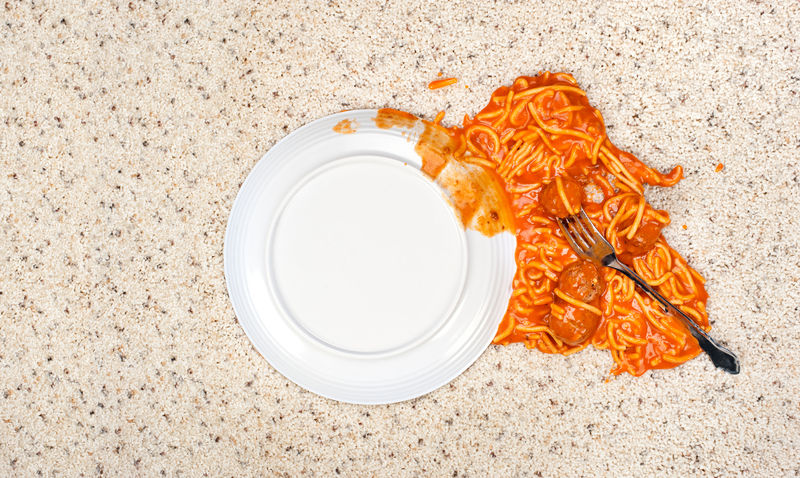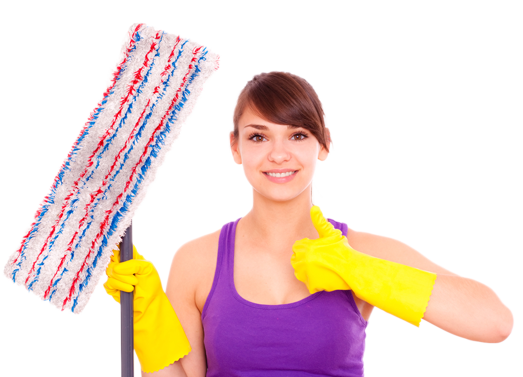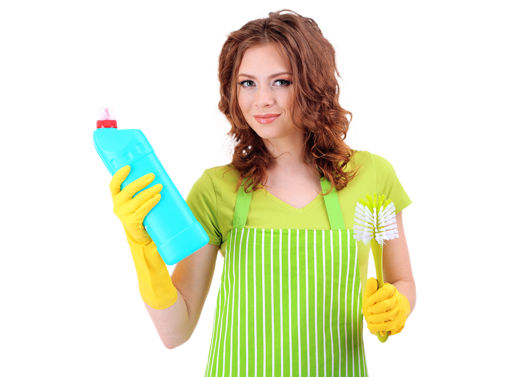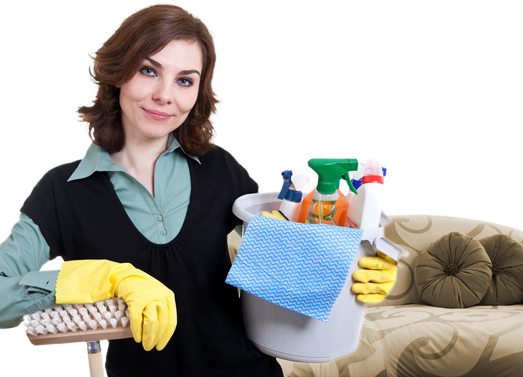Quick and Easy Techniques for uPVC Frame Cleaning
Posted on 18/08/2025
Quick and Easy Techniques for uPVC Frame Cleaning
Are your uPVC window and door frames looking dull or stained? Maintaining the pristine white finish and shine of uPVC frames doesn't have to be a chore. With just a few simple steps, you can restore your frames to like-new condition--improving both the appearance and lifespan of your fittings. In this detailed, SEO-optimized article, we'll walk you through quick and easy techniques for cleaning uPVC frames. Discover the best products, methods, and expert tips to maintain your frames, whether you have windows, doors, or conservatories!
Why is uPVC Frame Cleaning Important?
uPVC (unplasticised polyvinyl chloride) is widely used for windows and doors thanks to its durability, low maintenance, and cost-effectiveness. However, over time, uPVC frames can become grimy, stained, or develop stubborn marks due to dust, pollution, mold, or even residue from old cleaning attempts. Regular cleaning ensures:
- Maximum lifespan and durability of your frames
- Sustained visual appeal and property value
- Prevention of mold, mildew, and seal damage
- Improved functionality, such as smoother sliding or opening
- Better indoor air quality
Let's explore practical ways to keep your uPVC frames sparkling clean with minimal time and effort!

Essential Tools and Products for uPVC Frame Cleaning
Before you start cleaning your uPVC window or door frames, gather these basic supplies:
- Soft, non-abrasive cloths or microfiber pads
- Soft-bristled brush or old toothbrush
- Mild dish soap or uPVC-safe cleaning solution
- Bucket of lukewarm water
- Spray bottle (optional)
- White vinegar or baking soda (for stubborn stains)
- Non-abrasive sponge
- Old towels for drying
- Optional: uPVC cream cleaner
Tip: Never use metal scouring pads, harsh chemicals (like bleach or ammonia), or abrasive cleaning powders--these can scratch or discolor uPVC surfaces.
Quick and Easy Step-by-Step uPVC Frame Cleaning Guide
1. Remove Loose Dust and Debris
Start by dry brushing or vacuuming your uPVC frames to get rid of loose dust, cobwebs, bugs, or debris. Pay close attention to:
- Window sills
- Door thresholds
- Frame corners and joints
Use a soft brush, handheld vacuum, or dry microfiber cloth to sweep out accumulated debris. This initial step prevents scratching the surface when you wipe with a damp cloth later.
2. Wipe Down with Soapy Water
Mix a few drops of mild dish soap into a bucket of warm water. Dampen a soft microfiber cloth and wring out excess water to avoid drips. Wipe across all visible uPVC frame surfaces, including the inside and outside of the frames.
- Work from top to bottom to avoid streaking.
- Rinse your cloth often to avoid re-spreading dirt.
- For narrow grooves or joints, use an old toothbrush dipped in soapy water.
For patio doors or large windows, a spray bottle with soapy water may make application easier.
3. Target Problem Areas and Stubborn Stains
If certain areas look yellowed, stained, or greasy, take these steps:
- Baking soda paste: Mix baking soda with a few drops of water; apply to the stain and gently rub with a soft cloth or brush. Wait a few minutes, then wipe away residue with damp cloth.
- White vinegar solution: Spritz a 1:4 mix of white vinegar and water onto the marks, let sit for a few minutes, then wipe clean. Vinegar naturally cuts through mildew and water marks.
- uPVC cream cleaner: Commercial cream cleaners designed for uPVC frame cleaning are safe and effective on deep, persistent marks--just be sure to follow manufacturer instructions and test in an inconspicuous spot first.
Do NOT use: Strong solvents, acetone, nail polish remover, bleach, or abrasive pastes. These can permanently damage or discolor your frames.
4. Cleaning uPVC Frame Seals and Gaskets
The rubber seals (gaskets) around windows and doors are vital for weatherproofing. They can collect grime and mold, which can lead to sticking or perishing.
- Wipe gently with a soft, damp cloth and mild soap solution.
- For mold, a splash of diluted vinegar helps kill spores.
- Dry thoroughly to prevent moisture retention.
5. Finish by Drying and Polishing
After cleaning your uPVC frames, buff them with a dry microfiber cloth or towel to remove streaks and excess moisture. This step also restores shine and prevents water marks.
Advanced Tips for uPVC Cleaning and Maintenance
If you want to keep your window and door frames looking their best year-round, consider these expert suggestions:
- Clean your uPVC frames every 3-6 months--or more frequently if you live near a busy road, construction site, or coastal area.
- Avoid power washers, steam cleaners, or excessive water pressure, which can force moisture into joints and seals.
- Apply a silicone-based lubricant to locks, hinges, and moving parts after cleaning for smoother operation.
- If your uPVC window frames have stubborn black or green spots, treat carefully with vinegar or a specialist mold remover designed for uPVC.
- Check for cracked seals or flaking weatherstripping while cleaning and replace if needed.
- Use only products labeled "safe for uPVC" for best results and warranty protection.
Dealing with Old, Yellowed, or Faded uPVC
Over many years, even well-cared-for uPVC may develop some discoloration. Mild yellowing or fading can sometimes be reversed:
- Apply a commercial uPVC restorer polish--these can help refresh color and surface sheen.
- Do not paint standard white uPVC frames unless you use a specialist uPVC paint system; regular paints may peel or flake.
If heavy yellowing or cracks develop, it may be worth consulting a professional or considering frame replacement.
Eco-Friendly Techniques for Cleaning uPVC Frames
For the environmentally conscious, there are plenty of green cleaning methods for uPVC door and window frames:
- White vinegar and water: An all-natural degreaser and mildew remover
- Baking soda paste: Gently abrasive for stuck-on grime, without chemical residues
- Lemon juice: Adds natural antibacterial power and a fresh scent
- Microfiber cloths: Clean effectively with less water and soap
Avoid disposable wipes or harsh detergents. Not only are these less eco-friendly, but they can also wear down uPVC faster.
Frequently Asked Questions about uPVC Frame Cleaning
Q1: How often should I clean my uPVC frames?
Answer: Clean every three to six months, or as soon as you notice visible dirt, marks, cobwebs, or mold growth. More frequent cleaning may be required in urban, dusty, or windy environments.
Q2: What is the best cleaning solution for uPVC frames?
Answer: A mix of mild dish soap and warm water. For tougher stains, try white vinegar diluted with water or a specially formulated uPVC cleaner.
Q3: Can I use bleach or ammonia on uPVC frames?
Answer: No. Bleach, ammonia, and similar harsh chemicals can damage and discolor uPVC surfaces. Always use mild cleaning products formulated for plastics.
Q4: How do I get rid of black mold on uPVC frames?
Answer: Wipe with a diluted vinegar solution or a small amount of baking soda paste. For heavy infestations or reoccurring mold, consult a specialist mold remover for uPVC.
Q5: Will cleaning uPVC frames affect window glass or surrounding walls?
Answer: If you use gentle cleaners and avoid excessive water, there is minimal risk. Protect painted walls or delicate surfaces with towels and avoid splashing strong solutions on glass or brickwork.
DIY vs. Professional uPVC Frame Cleaning
The good news: Most uPVC window and door frame cleaning is simple and can be done safely at home. However, consider professional cleaning or restoration if:
- Your frames are very old, yellowed, or structurally damaged
- You spot persistent mold or algae you can't remove
- You're preparing for a major home sale or renovation
Professionals use industrial-grade yet uPVC-safe products, and can sometimes restore frames that appear beyond DIY help.

Top 10 Dos and Don'ts for uPVC Frame Cleaning
- Do: Use soft microfiber cloths and soft brushes
- Do: Clean under window ledges, grooves, and gaskets
- Do: Immediately wipe any spilled paint, glue, or sealant before it dries
- Do: Use gentle, circular motions to avoid swirling or scratching
- Do: Finish with a dry cloth for a streak-free shine
- Don't: Use harsh bleaches, scouring pads, or solvents
- Don't: Attempt to scrape stains with metal tools
- Don't: Spray water directly into joints or moving parts
- Don't: Forget to check and clean the window and door tracks
- Don't: Use car polishes, wax, or household creams not labeled safe for uPVC.
Conclusion: Enjoy Sparkling Clean uPVC Frames with Minimal Fuss!
With these quick and easy techniques for cleaning uPVC frames, you can keep your windows and doors looking bright and beautiful for years. A simple cleaning routine just a few times a year will not only keep your property looking its best, but also ensure the durability and efficiency of your window and door units. Remember to always use gentle, uPVC-safe products and tools--and when in doubt, consult the manufacturer or a professional cleaner.
Ready to tackle grime and refresh your home's look? Try these proven methods today and enjoy the clear, fresh view from your spotless uPVC window and door frames!




